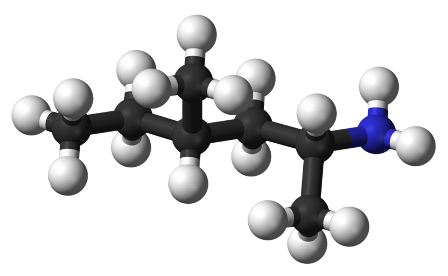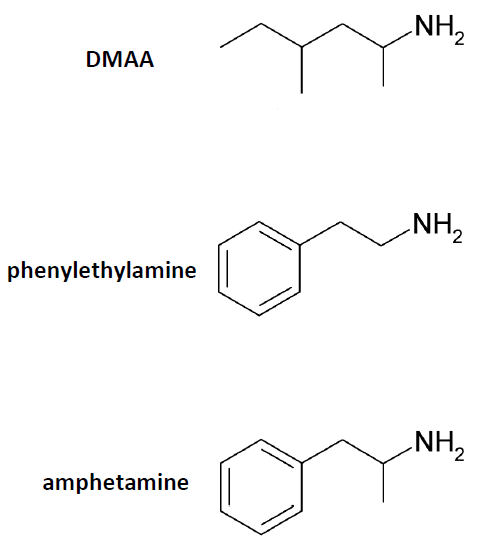A dangerous stimulant?
Friday 1 February 2013
It is not often that a drug hitting the headlines has a very simple structure. One that has been in the news recently is commonly known as 1,3-dimethylamylamine or DMAA. In fact its IUPAC name is 4-methylhexan-2-amine as the longest carbon chain is six. This almost puts it within the range (up to six carbon atoms) of compounds that Higher Level IB students could be expected to name (see assessment statement 20.1.1).

4-methylhexan-2-amine also known as DMAA
DMAA appeared originally in the 1940s as a nasal decongestant. In 2005 it was first introduced as a dietary supplement. There appears to be little solid research about it potential hazards but anecdotal evidence has been building up and beginning with Canada in 2011 the substance has started to be banned in many countries. New Zealand banned it in March 2012 and the UK followed in August 2012. It appears not to have been banned in the US yet but warnings have been issued to mIB Docs (2) Teamfacturers of products containing the drug. This follows the death of two US soldiers who collapsed and died in February 2012 after taking DMAA as a body building supplement. In the UK a runner who had taken DMAA, which at that time was a legal substance, collapsed and died during the London marathon. She had added an energy supplement called Jack3D which contained DMAA to her water bottle. In the coroner’s report into her death it was quoted as a probable contributory factor.
It could be of interest to ask your students to compare the structure of DMAA with amphetamine. Those studying Option D: Medicines and drugs should know that amphetamine has a similar structure to adrenaline (epinephrine). Both are derived from the phenylethylamine structure. Although DMAA does not contain an aromatic group its structure does have some similarities with amphetamine (see below) and this may explain why it appears to act as a stimulant.



Comments
To post comments you need to log in. If it is your first time you will need to subscribe.